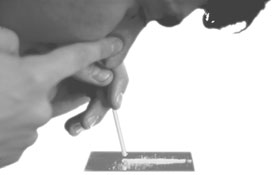
 Collection
CollectionDrugs: the complete collection
All Effectiveness Bank analyses to date of documents related to use and problem use of illegal drugs starting with the analyses most recently added or updated, totalling today 815 documents.
![]() Click blue titles to view full text in a new window
Click blue titles to view full text in a new window![]() Use the selectors at the bottom to turn to the next page in the list of documents
Use the selectors at the bottom to turn to the next page in the list of documents
REVIEW 2011 HTM file
Adapting psychotherapy to the individual patient: Resistance/reactance level
Beutler L.E., Harwood M.T., Michelson A. et al.
Journal of Clinical Psychology: 2011, 67(2), p. 133–142.
Meta-analytic review commissioned by a US task force concludes that psychotherapy patients who characteristically exhibit low levels of resistance or reactance respond better to directive types of treatment, while reactive patients prone to resist direction respond best to non-directive approaches.
STUDY 2012 HTM file
Defining dosing pattern characteristics of successful tapers following methadone maintenance treatment: results from a population-based retrospective cohort study
Nosyk B., Sun H., Evans E. et al.
Addiction: 2012, 107(9), p. 1621–1629.
Based on detailed treatment records kept by the Canadian province of British Columbia, a slow taper liberally interspersed with stabilisation periods offers the best chance of sustainably withdrawing from methadone without severe relapse, but still very few manage to avoid this risk – an argument for careful consideration and informed consent before making the attempt.
REVIEW 2013 HTM file
Efficacy of psychostimulant drugs for amphetamine abuse or dependence (Review)
Pérez-Mañá C., Castells X., Torrens M. et al.
Cochrane Database of Systematic Reviews, 2013
Unlike its counterpart which reviewed psychosocial interventions for people dependent on amphetamines, this paper was unable to point to promising pharmacological treatment options involving the use of stimulants as a substitute therapy.
STUDY 2015 HTM file
Emergency department-initiated buprenorphine/naloxone treatment for opioid dependence: a randomized clinical trial
D’Onofrio G., O’Connor P.G., Pantalon M.V. et al.
JAMA: 2015, 313(16), p. 1636–1644.
Unique trial tests what emergency doctors should do when screening identifies opioid dependence. More effective at promoting treatment and curbing opioid use than referral and brief advice was, it seems, actually initiating treatment in the form of buprenorphine maintenance.
REVIEW 2008 HTM file
Substance abuse treatment for women offenders: a research review
Adams S., Leukefeld C.G., Peden A.R.
Journal of Addictions Nursing: 2008, 19, p. 61–75.
A major contributing factor to women being incarcerated and a critical factor in women’s reoffending, this review addresses the substance use treatment needs of female offenders and gender-specific interventions.
MATRIX CELL 2018 HTM file
Drug Treatment Matrix cell D5: Organisational functioning; Safeguarding the community
Ashton M.
Key research on the influence of the treatment organisation on the effectiveness of drug treatment in the criminal justice system and allied settings. Asks whether the criminal justice context enhances or limits treatment (perhaps both), whether quality is better in smaller services, and whether treatment services should see themselves as family services.
STUDY 2012 HTM file
Adaptive programming improves outcomes in drug court: an experimental trial
Marlowe D.B., Festinger D.S., Dugosh K.L. et al.
Criminal Justice and Behavior: 2012, 39(4), p. 514–532.
Latest in an impressively coherent and persistent series of studies of how US courts specialising in supervision and treatment of drug-related offenders can do more to reduce drug use and crime. Triaging offenders to more or less intensive programmes and then adjusting based on actual progress made significant differences.
DOCUMENT 2018 HTM file
Medications for opioid use disorder: for healthcare and addiction professionals, policymakers, patients, and families: Treatment Improvement Protocol: TIP 63
Substance Abuse and Mental Health Services Administration
[US] Substance Abuse and Mental Health Services Administration, 2018
Expanding access to medication is an important public health strategy for tackling opioid use disorder, concludes US government agency guidelines. While some people stop using opioids without medication, many benefit from access to methadone, naltrexone, and buprenorphine for varying lengths of time, including lifelong treatment.
STUDY 2018 HTM file
The impact of buprenorphine and methadone on mortality: a primary care cohort study in the United Kingdom
Hickman M., Steer C., Tilling K. et al.
Addiction: 2018, 113(8), p. 1461–1476.
Buprenorphine may be associated with a lower risk of mortality than methadone among people engaged in opioid substitution treatment – but is the pattern of short treatment duration in the UK preventing maximal impact at a population level?
MATRIX CELL 2018 HTM file
Drug Treatment Matrix cell A5: Interventions; Safeguarding the community
Ashton M.
Seminal and key studies shedding light on treatment’s contribution to safeguarding the community and preventing crime. Commentary addresses two highly controversial issues, asking, “Can it ever be safe to leave children with seriously problematic drug users?”, and examining the ethical considerations and evidence on pressuring opioid-dependent offenders to take the opiate-blocker naltrexone.
Select search results page